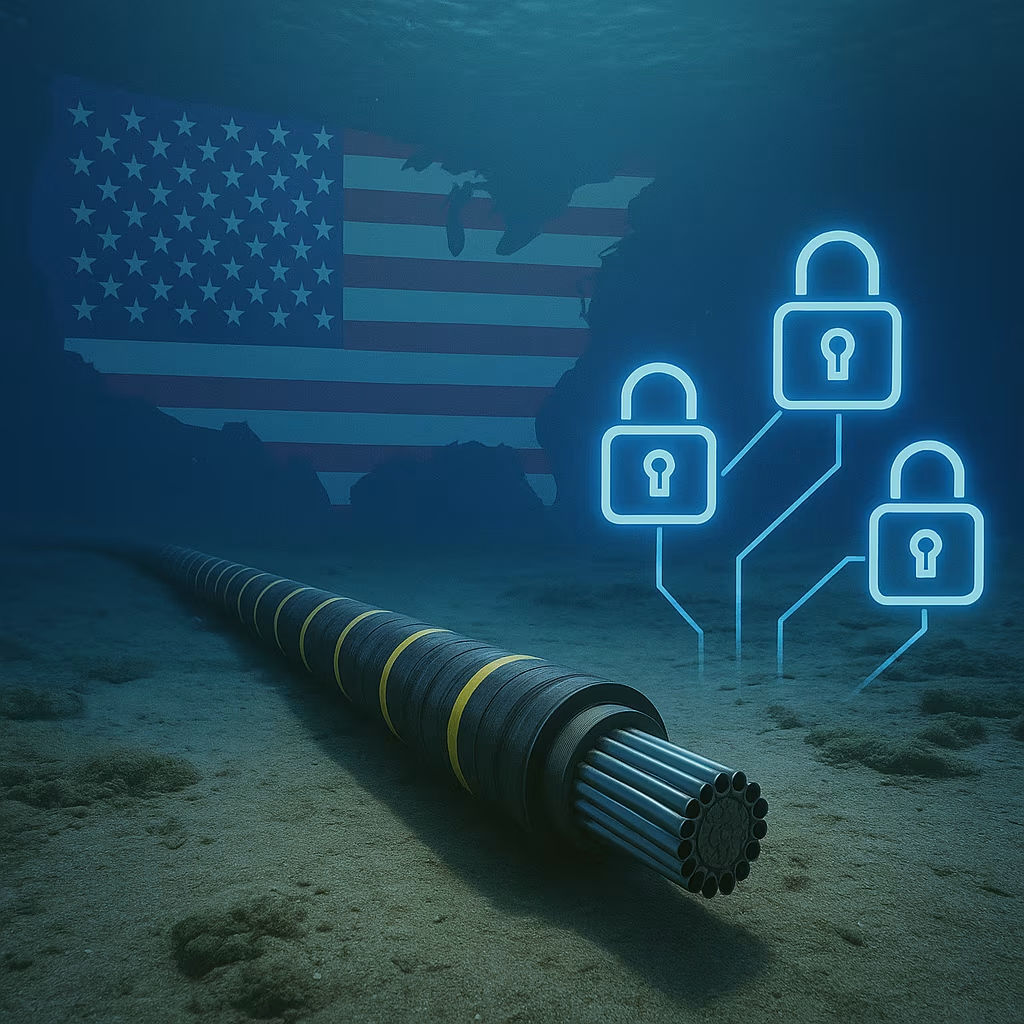The United States has introduced a set of new regulations governing submarine communications cables, aimed at mitigating security risks tied to Chinese involvement in the critical undersea infrastructure. The move underscores Washington’s growing focus on securing the global internet backbone against espionage, sabotage, and geopolitical leverage.
Submarine cables carry over 95% of the world’s international data traffic, making them essential to global commerce, defense communications, and everyday digital connectivity. With tensions between Washington and Beijing continuing to intensify, the U.S. government is prioritizing control, monitoring, and protection of these critical assets.
Why Submarine Cables Are National Security Assets
While satellites often receive attention in discussions about global communications, the reality is that nearly all internet, voice, and financial data between continents flows through a network of undersea fiber-optic cables. These cables are capable of transmitting terabits of data per second, linking countries and continents with near-instant speed.
This infrastructure is privately operated but strategically vital. Any compromise—whether physical tampering or cyber infiltration—could allow foreign actors to intercept sensitive communications or disrupt service on a massive scale. Given the scale and importance of submarine cables, they are now seen as part of a nation’s critical infrastructure, on par with energy grids and transportation networks.
The China Security Dimension
The new U.S. rules are driven in large part by concerns over Chinese companies’ roles in building, maintaining, or owning segments of submarine cable networks. Some of these companies have direct or indirect ties to the Chinese government, raising fears that Beijing could use its influence to access or monitor global data flows.
U.S. officials have also warned about the possibility of physical threats, including the interception or deliberate damage of cables in contested waters. With China expanding its presence in the South China Sea and other strategic maritime zones, the security of undersea infrastructure has become a pressing geopolitical issue.
Key Provisions of the New Rules
The updated regulations introduce tighter oversight and more rigorous security requirements for companies involved in U.S.-connected submarine cable projects. These include:
- Enhanced Vetting of Ownership and Partnerships – All foreign ownership stakes in cable systems connected to U.S. territory will face stricter review for potential national security risks.
- Mandatory Security Plans – Cable operators must submit detailed plans for monitoring, maintenance, and incident response to detect and counter any interference.
- Operational Access Controls – Limiting who can access landing stations, control systems, and data management infrastructure.
- Ongoing Government Oversight – Regular inspections and audits by relevant U.S. agencies to ensure compliance with security protocols.
The new framework also empowers the government to impose conditions on cable licenses or even deny approvals for projects deemed too risky.
Impact on Global Cable Projects
These regulations could reshape how submarine cable projects are planned, financed, and built. While the U.S. does not control all international routes, its influence is significant because many cables either land on U.S. territory or connect through American partners.
Projects involving Chinese contractors or investors may now face delays, redesigns, or outright cancellation if they fail to meet the new security standards. Industry experts expect a shift toward working with suppliers from allied nations, even if costs rise as a result.
Balancing Security and Connectivity
While the primary goal of the new rules is to mitigate security threats, they also raise questions about the balance between safety and global connectivity. Submarine cables are a shared international resource, and collaboration is often necessary to finance and operate them efficiently.
However, the growing bifurcation of global technology supply chains—often referred to as the “digital divide” between U.S.-aligned and China-aligned networks—means that the undersea cable ecosystem could increasingly fragment along geopolitical lines.
Industry Response
Cable operators, telecom companies, and infrastructure investors are closely watching how the rules will be implemented in practice. Some welcome the clarity and security focus, noting that a single breach could have catastrophic economic consequences. Others are concerned about project delays, increased compliance costs, and the potential for retaliatory measures from China.
For companies already involved in multinational cable projects, compliance will require careful partner selection, stronger cybersecurity protocols, and potentially reconfiguring routes to avoid high-risk jurisdictions.
The Geopolitical Ripple Effect
The U.S. is not alone in scrutinizing submarine cable security. Allies in Europe, Asia, and the Pacific are also assessing vulnerabilities and, in some cases, introducing their own safeguards. The result could be a coordinated effort among like-minded nations to create a “trusted network” of secure undersea cables.
Such moves are likely to further strain relations with China, which has invested heavily in global telecommunications infrastructure as part of its broader Belt and Road Initiative.
As digital economies expand and data demands grow, submarine cables will only become more strategically important. The U.S. government’s latest rules signal a long-term commitment to protecting these arteries of global communication from espionage and disruption.
For technology companies, telecom operators, and investors, adapting to this new reality will be essential. The challenge will be to safeguard the network without slowing the pace of global connectivity—an increasingly complex task in an era where technology, security, and geopolitics are deeply intertwined.





